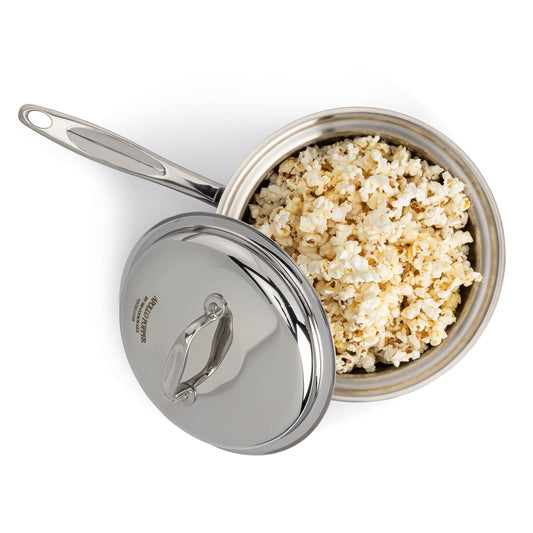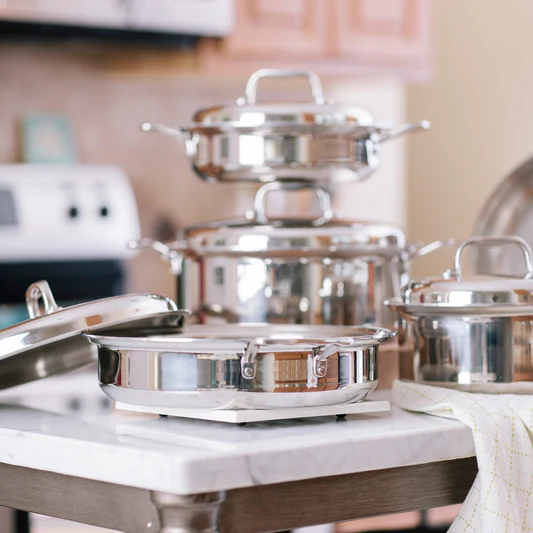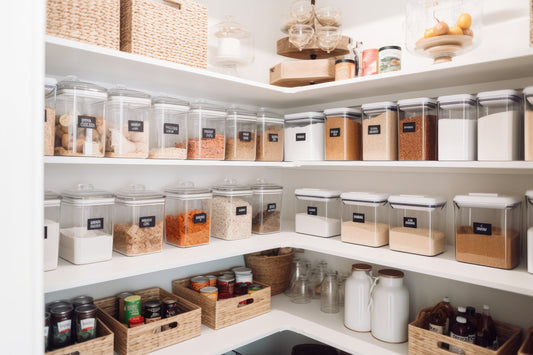First invented in the 1930s, the slow cooker has become one of the most popular kitchen appliances, and with good reason. You can start a dish in the morning before heading out the door, and come home after work to a hot, delicious meal. The slow, moist cooking process is ideal for creating luscious stews or fork-tender meat dishes with very little attention. Slow cookers are also very convenient for taking along to potlucks or family dinners.
When buying a new slow cooker, it’s important to consider not just price and performance, but also the possibility of toxins leaching into your food. After all, your dish will be cooking for as long as eight to ten hours, so you need to be sure that the insert is free of contaminants that could affect your family’s health.
What is a Slow Cooker?
A slow cooker, often familiarly referred to by the brand name Crock Pot, is an electric appliance that uses low temperatures to cook foods over an extended period of several hours. This is an advantage for busy households where time is in short supply. It’s also an excellent way to prepare foods such as tougher cuts of meat so that they come out tender and flavorful.
Types of Slow Cooker Inserts
While some slow cookers have inserts that can be lifted out, others are not removable. A removable insert is easier to clean, and can be brought to the table as a serving vessel. However, there are other things to consider when shopping for a slow cooker, as some materials used for inserts are not reliably non-toxic.
Ceramic
Glazed ceramic is one of the classic choices for a slow cooker insert. If you’ve got an older model in your kitchen, possibly handed down from your parents, it’s likely to have a ceramic insert. However, that ceramic may well have lead in its glaze, so now is the time to get rid of it and buy a new slow cooker! Still, even new ceramic slow cookers could have trace amounts of lead or cadmium that can leach into your food as it cooks, especially if you’re using acidic ingredients.
Unglazed
Manufacturers of unglazed slow cooker inserts claim that they are non-toxic because they have no glaze, which is the main source of leads and cadmium in glazed ceramic. However, they are much less practical for regular use, as the unglazed surface is much harder to clean, and can retain flavors from previous dishes.
Aluminum
Aluminum inserts are popular, as they are lightweight and relatively easy to clean. There’s a downside to this metal when used in cooking, though, as there is some evidence that aluminum leaching into food can contribute to the development of Alzheimer’s disease. Especially with the extended cooking time for a slow cooker, it’s not a good choice for your kitchen.
Nonstick
Nonstick pans, whether coated with Teflon or newer, PFOA-free surfaces, are a problematic choice for slow cooker inserts. Because the cooking time extends over a period of several hours, the chance of toxic substances leaching from the coating into your food are much increased. As well, any scratches or chips in the surface will expose the underlying aluminum layer, with the potential risks associated with that metal. Finally, acidic ingredients such as tomatoes, citrus, or vinegar can react with and weaken the coating, leading to a shortened lifespan and increased risk of contamination of your food. This severely limits the versatility of a nonstick slow cooker in your kitchen.
Ceramic Nonstick
Ceramic coating is increasingly marketed as a safer alternative to traditional nonstick cookware, but it’s also not without risk. Just as with nonstick inserts, any scratches in the surface can lead to toxins leaching into your food as it cooks. In addition, if the silicon dioxide coating gets chipped, you could end up with fragments in the finished dish.
Stainless Steel
Stainless steel is the safest material for the insert in a slow cooker. For instance, 360 Cookware uses surgical grade stainless steel for the interior and exterior layers for a toxin-free cooking surface. While it does have an interior layer of aluminum for improved heat conduction, the aluminum is sealed in for complete safety. You don’t have to worry about the stainless steel wearing down and requiring replacement, either, as it is engineered to last for decades.
360 Cookware’s slow cooker is extremely versatile, as it consists of a separate base with a choice of a 2.3 quart, 4 quart , or 6 quart stainless steel pot that can also be used on the stovetop or in the oven.
Do you need to use liners for slow cookers?
Many home cooks rely on disposable slow cooker liners to keep their inserts clean, but with proper cooking techniques they shouldn’t be any more necessary than a nonstick insert surface.
Most liners are made of BPA-free plastic, but the jury is out on what other toxins may be released. As well, they are a single-use plastic product, with all of the environmental issues that those materials entail. While reusable silicone liners are starting to appear on the market, there’s really no reason to use a liner, anyway.
For dishes such as slow cooker casseroles or cakes, grease the inner surface of the insert well before adding the ingredients, or use a sheet of compostable parchment paper to line it. If some stuff does get stuck over the hours your dish is cooking, simply follow the best practices for removing it after the insert is emptied and cooled. Fill it with hot, soapy water and let it soak for a few hours or overnight before wiping it out.
Which Slow Cooker is Best?
Slow cookers are marvellous additions to a home cook’s kitchen appliances, but make sure that you buy one that is guaranteed to be non-toxic. While ceramic and nonstick coatings claim to be easy to use, those non-stick properties come with the risk of toxins being cooked into your food.
On the other hand, a stainless steel slow cooker is the safest choice that you can make for your family’s health. With no toxic substances used in its construction, a well-made stainless steel slow cooker can keep working for you for decades to come!





